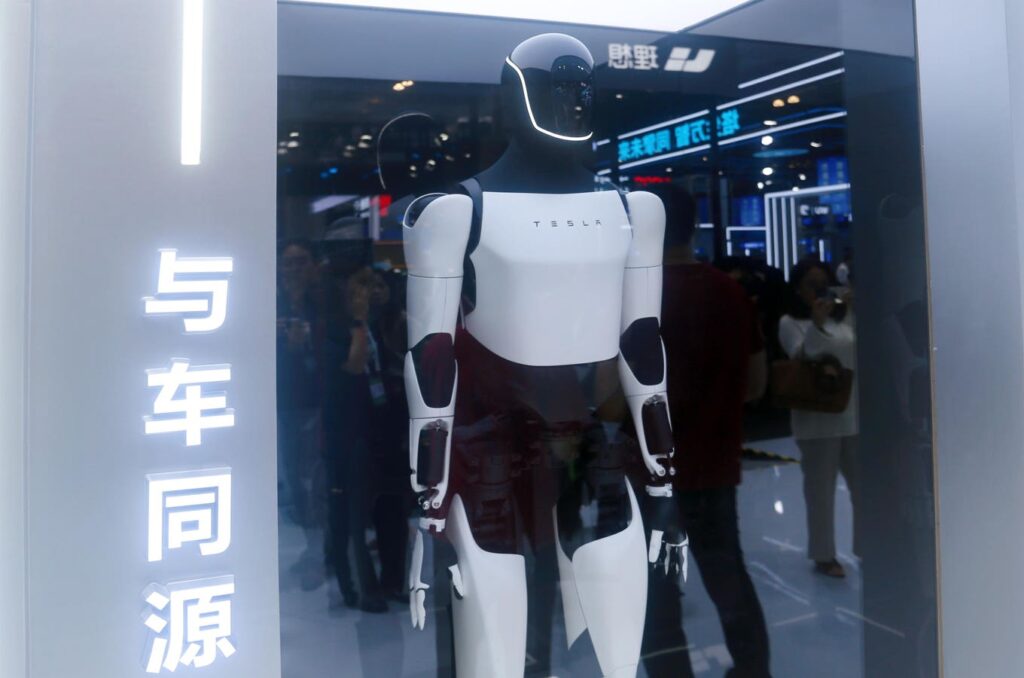
While SpaceX founder Elon Musk has pledged to dispatch a crew of Optimus robots aboard the first titanic Starships to be launched to Mars, their interplanetary odyssey is likely to be short-lived, according to a leading robotics scholar. Musk, the world’s richest techno-aristocrat, recently told his 200 million followers on the messaging platform X that the Tesla-conceived droid could be launched as soon as 2026. He stated,
“Slight chance of Starship flight to Mars crewed by Optimus in Nov/Dec next year. A lot needs to go right for that.”
He added that a more realistic timeline would see the first flight without humans in approximately 3.5 years, followed by a flight with humans in about 5.5 years.
However, unless Tesla’s leadership achieves sensational technological advances in improving the robustness of the cloned Optimus bots before they blast off for Mars, they are likely to face the same challenges that all humanoid robots encounter at this early stage in their evolution. Christian Hubicki, an acclaimed scholar who heads the Optimal Robotics Laboratory at Florida State University, suggests that while researchers are racing to strengthen and perfect these replicated humans, humanoid robots worldwide still share an array of vulnerabilities.
“Humanoids fall down. They break. Their code crashes,”
he explains.
Challenges and Comparisons with Past Endeavors
The planned launch of the Optimus squad of identical robots by SpaceX follows the lead of NASA, which sent its cutting-edge Robonaut 2, a space android created in the image of astronauts, to the International Space Station over a decade ago. The Robonaut was equipped with next-generation processors, cameras, a LIDAR scanner, and an AI-powered image recognition system to navigate its surroundings. It was trained to interact with oxygen-breathing spacefarers on the ISS and with ground-control scientists on Earth.
Professor Hubicki notes,
“Humanoid robots are not entirely new to space, but only on space stations where humans are already there to fix them. Mars is a different ballgame.”
When NASA launched Robonaut 2 to the ISS in 2011, it was designed to assist human astronauts already on the space station, a first step toward freeing their attention for other work. While Robonaut 2 underwent a series of demos with simple autonomous tasks, it was mostly teleoperated by mission controllers, becoming their celestial avatar while orbiting at 28,000 kilometers per hour.
“Critically on the ISS, humans are there to help and fix the robot when it inevitably falters,”
Hubicki says.
“On Mars, there are no humans to rescue it, and replacement parts are a nightmare to ship in.”
The Quest for Reliable Humanoids
The global pursuit to develop androids that approach human intelligence and reliability is accelerating.
“In space, reliability is king,”
Hubicki emphasizes.
“On Mars, it is life or death.”
Without a significant technological leap in humanoid reliability, he predicts, an unaccompanied humanoid on Mars wouldn’t be functional for long.
Although the Robonaut tested on the ISS is now displayed at the Smithsonian’s National Air and Space Museum, researchers at NASA aim to develop a next-generation droid that can accompany astronauts on high-risk spacewalks outside the ISS, as part of preparations for future Mars missions. Astronauts aboard a Mars orbiter could one day teleoperate a squadron of robots—avatars deployed to map potential landing sites along the Martian dunes and beam back their 3D imagery, according to researchers at the NASA Ames Research Center and the Jet Propulsion Lab at CalTech.
Looking Ahead: Testing and Future Missions
As an alliance of robotic and human explorers for future Mars missions unfolds, Professor Hubicki acknowledges,
“There are interesting research approaches toward sending unaccompanied robots to Mars to build a [human] habitat, but those solutions are very much in the concept stage.”
Future-generation robots patterned after humans, those that have become at least as strong as their creators,
“have the potential to excel in dangerous environments.”
He envisions a theoretical use case on another planet, asking,
“Could humanoids be used to go where it’s too dangerous for humans to go? Absolutely, in theory. That’s my aspiration and that of many researchers in the field.”
Professor Hubicki suggests that Elon Musk might consider testing his Optimus aeronauts on a closer destination before launching them to Mars, which is up to 400 million kilometers away from Earth.
“If I were in charge of a space humanoids program, I would recommend test deployments with future lunar missions before we shoot them off to Mars.”
He adds,
“Yes, the moon provides its own unique challenges—moon dust is a nightmarish tangle of sharp and jagged particles that wear down equipment quickly. But the moon is closer than Mars, making it easier to staff with technically skilled humans and replacement parts would be far easier to ship.”
SpaceX has already signed dual agreements, valued at over $4 billion, with NASA to shuttle astronauts from lunar orbit down to the Moon’s South Pole starting in 2027. SpaceX’s lunar lander, the massive Starship super-capsule, is designed to transport 100 spacefarers and could speed a brigade of Optimus droids to a lunar touchdown alongside their NASA allies.




